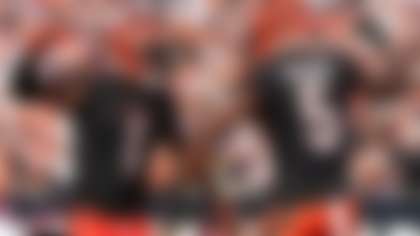A storybook tale of triumph looked like it was in bloom in the early portions of the 2016 season. A team mired by injuries to the most crucial positons, one forged by the contrarian strategy of physical defense in the era of high-flying offense looked to be developing into the thematic centerpiece of the league year.
Once upon a time this season the Minnesota Vikings were riding high, carrying a 5-0 record headed into their Week 6 bye. Their defense was already drawing comparisons to the vaunted 2015 Denver Broncos unit that essentially vaulted Peyton Manning and a stunted offense to a Super Bowl win. Despite their passing offense never crossing the 300-yard threshold, it was carrying a running game that was not a net positive at any point in the season.
All that while crawling back from a mountain of adversity. Third-year quarterback Teddy Bridgewater was out for the season after suffering a gruesome knee injury that could threaten even his 2017 availability. Future Hall of Fame running back Adrian Peterson wasn't effective when he was on the field, and then went down with a meniscus tear in Week 2, landing him on injured reserve. The move to trade a future first-round pick for Sam Bradford looked like not only a season-saving maneuver, but a franchise altering one that vaulted the Vikings to the top of many league power rankings. Their tough mentality permeated by a no-nonsense head coach and talent-laden defense was endearing in a league that doesn't embrace their type of football.
It's a tale that now, at this point, seems like an exercise in ancient history. A faded memory of days gone by that jostles us awake to the reality brought on by winning a single game since Week 7 to slump to a 6-6 record as the month of December dawns. The Vikings still wear the same uniforms; they play in the same stadium. But the team we see on the field is a collection of mere ghosts compared to the troupe of actors from the tale told in September.
With the offense Minnesota currently puts out on the field, they simply cannot hope to compete in the NFC. The Vikings' playoff hopes are dashed, even if the mathematic equations still deem them possible.
The defense can still keep up its end of the bargain, and they reminded us of that tonight. Minnesota's stop unit was on the field a ton, but still limited rookie Dak Prescott to just 139 passing yards on the night, and put pressure on him frequently. Ezekiel Elliott finished with just 86 rushing yards, and 30 of them came on a long run in the fourth quarter. Until then, they'd mostly kept him in check.
Rather, it was the offense and their inability to provide any sort of counterpunch to their defense's fortitude that revealed who they were in public fashion. And who they are just isn't good enough.
From Weeks 2-8 with Norv Turner at the helm, Sam Bradford averaged 7.9 intended air yards on his passes. He averaged a solid 6.4 air yards on his completions. The former No. 1 overall pick always had a reputation for playing it safe, but it appeared he was finally in an environment to thrive. For weeks it was hard to shake the memories of Bradford rifling deep passes to emerging star Stefon Diggs downfield through the heart of the Packers' defense in his first start for the team.
Turner's departure and Pat Shurmur's installation as offensive play-caller brought along a new philosophy. Stefon Diggs moved to playing primarily out of the slot and Bradford's intended air yards fell to a 7.0 average, and his completed average fell over a full yard to 5.2 air yards.
It was clear that philosophy wasn't going to provide a sustainable offense. To their credit, Minnesota tried to re-integrate some downfield shots into their offense on Thursday Night Football.
Before the final drive of the game Bradford averaged 8.7 intended air yards on his passes, which was over a full yard higher than his early-season average. The team attempted to let the physically gifted thrower attack the Cowboys downfield ... to no avail. On his 32 completions tonight the Vikings quarterback averaged just 4.9 air yards. A differential of 3.8 between his intended and completed air yards show the inefficiency of Bradford's attempts downfield.
It was not until the last drive of the game, where the Vikings scored the potential game-tying touchdown but failed to convert the two-point attempt, did they put together a consistent offensive showing. To no surprise, that's also when Minnesota scaled the passing attack back to a minuscule level, as Bradford averaged 4.9 air yards per pass attempt.
It's not all on the quarterback, and it doesn't take advanced numbers to know the lack of pass protection brought on by waves of offensive line injuries is holding this team hostage. The Cowboys blitzed Bradford on 28 percent of his pass plays tonight, and he averaged just 5.5 yards per pass attempt on 12 throws in those situations.
In the NFL today, there's simply no margin for error when your offense cannot push the ball downfield. It's clear that Minnesota cannot do that at this point, and the evaporation of any threat beyond the short-areas of the field as taken with it any belief they'll push for a postseason berth.
Despite a defense that is still among the league's best and littered with young talent, the lack of an offensive counterpunch makes the early chapters of the Vikings 2016 story book a mere distant memory. We've turned the pages on that view of the team, and now it's time to close the book entirely.
Matt Harmon is a writer/editor for NFL.com, and the creator of #ReceptionPerception, who you can follow on Twitter _@MattHarmonBYB_ or like on Facebook.












